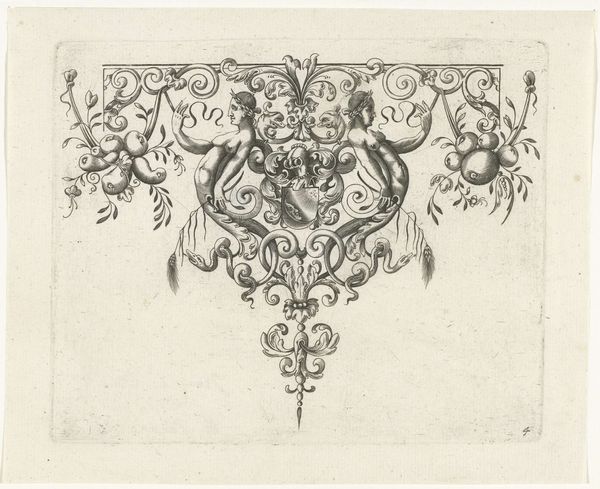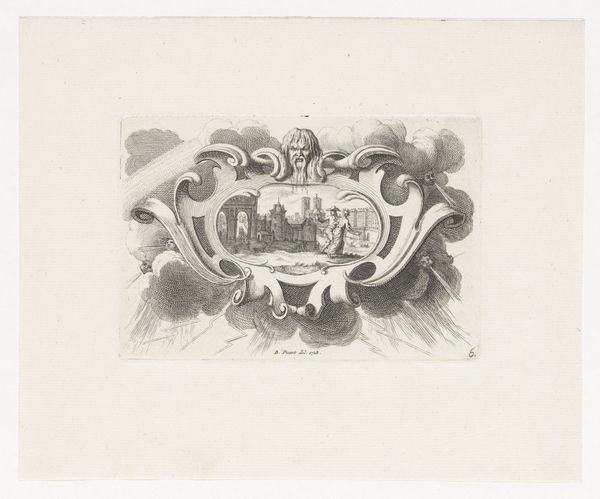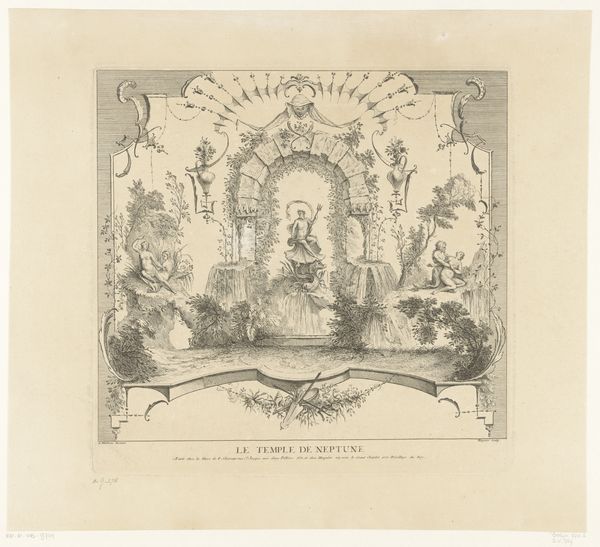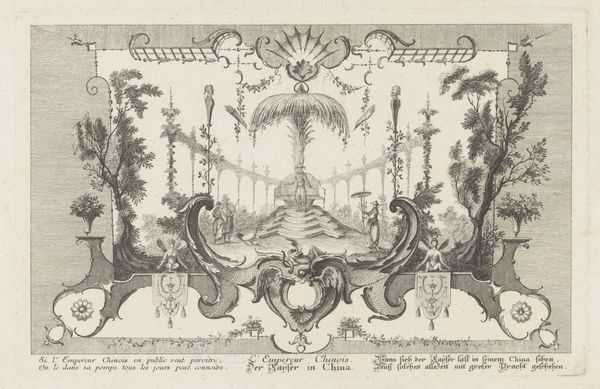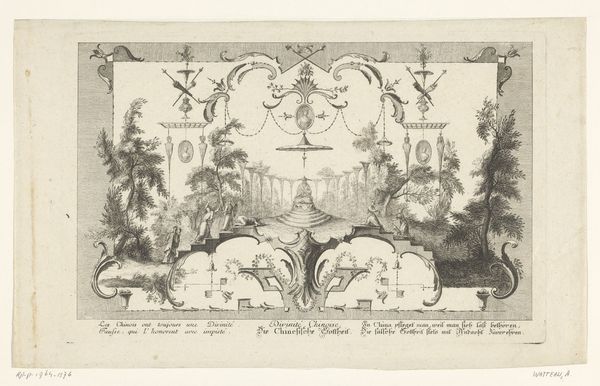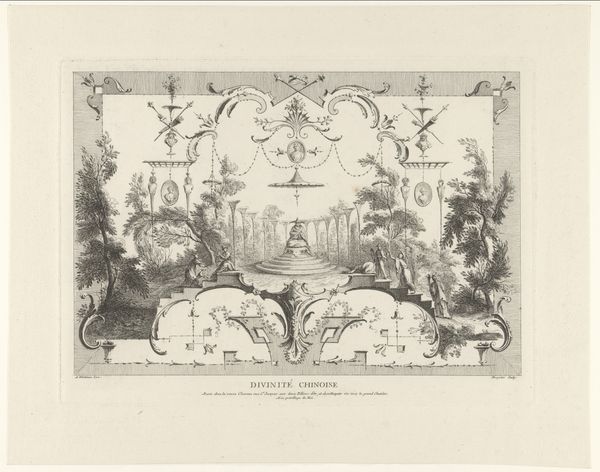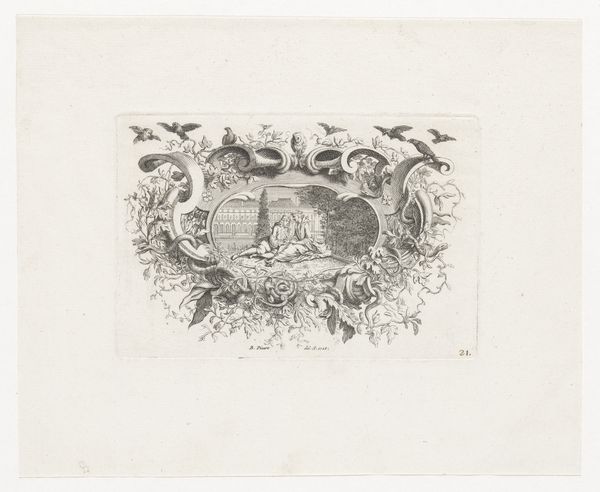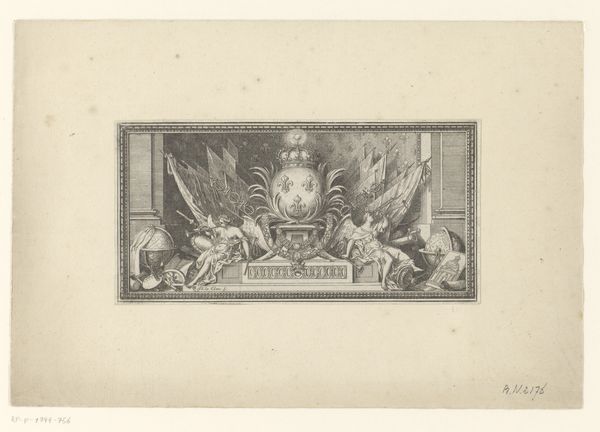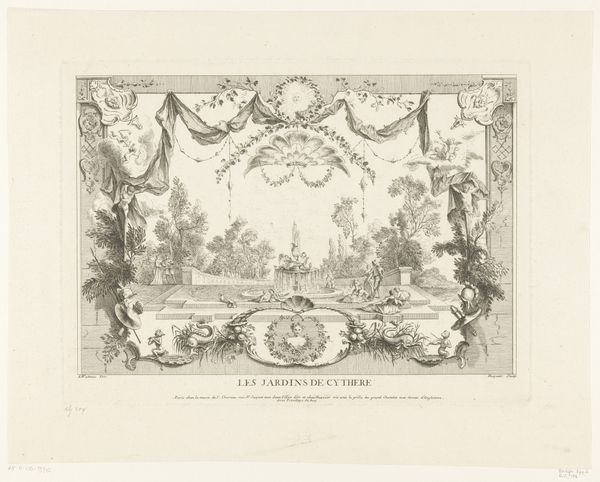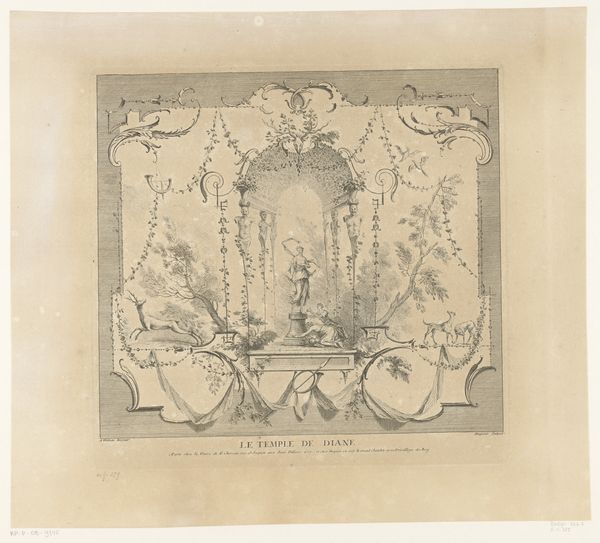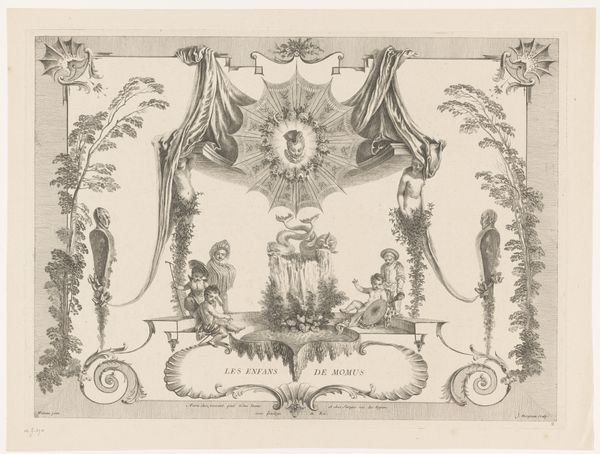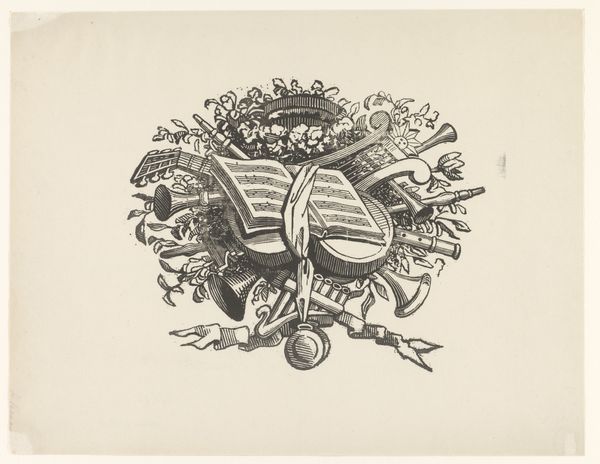
print, engraving
#
baroque
# print
#
old engraving style
#
landscape
#
history-painting
#
engraving
Dimensions: height 288 mm, width 396 mm
Copyright: Rijks Museum: Open Domain
Curator: Before us, we have "Chinese Emperor," an engraving by Gabriel Huquier, dating from 1729 to 1737. It's currently held here at the Rijksmuseum. Editor: Well, immediately I’m struck by the elaborate ornamentation; it feels quite fantastical and airy, almost theatrical. Is this how the artisan envisioned the emperor? Curator: It's fascinating to consider how Huquier employs Baroque aesthetics to depict a foreign figure and landscape. The engraving technique allows for such detail in rendering both the central figure and the surrounding decorative elements. Look at how the use of line creates depth and texture, suggesting various materials from stone to foliage. Editor: The lines really do guide the eye. I find myself curious about the availability of materials, paper, inks during this era. Was Huquier working independently or within a larger workshop? Who was the consumer for a print like this? Curator: Indeed, thinking about its production reveals much about the art world of the 18th century. Engravings were often produced in multiples, allowing for wider distribution and consumption, particularly among the rising merchant class who sought to emulate aristocratic taste. It certainly speaks to an interest in and a romanticized view of foreign cultures that fueled artistic creativity. Editor: And it seems the very act of engraving allowed the original design, I think by Jean Baptiste Pillement, to be further embellished upon in reproduction by Huquier. It's not simply replication, it's further production and aesthetic invention. Curator: Precisely! And the very frame calls our attention not just to what it encloses but how that very decorative structure influences and shapes meaning. The structure creates a contained picturesque space in a fashion similar to those Chinese style rooms found in Baroque palaces. Editor: It also serves a propagandistic purpose—idealizing an opulent world for a distant public with money, access, and privilege enough to obtain an artwork such as this. A carefully crafted vision is created through layers of decisions made across processes. Curator: This engraving allows us to deconstruct assumptions, seeing art history less as a series of isolated masterpieces and more as a set of relations that structure reality through a set of stylistic choices. Editor: Yes, examining the circumstances surrounding its creation reveals the multifaceted layers behind what some would merely see as art and technique alone.
Comments
No comments
Be the first to comment and join the conversation on the ultimate creative platform.

